Despite starting her career in Russian language, Dutch-artist Adinka Tellegen returned to embroidery determined to ‘paint’ in textile. Her labour intensive work is produced in her home studio in Amsterdam.
In our interview with Adinka we talk about her use of colour and why it is so important to her work. We also take a closer look at the time consuming techniques she uses to create her painterly works.
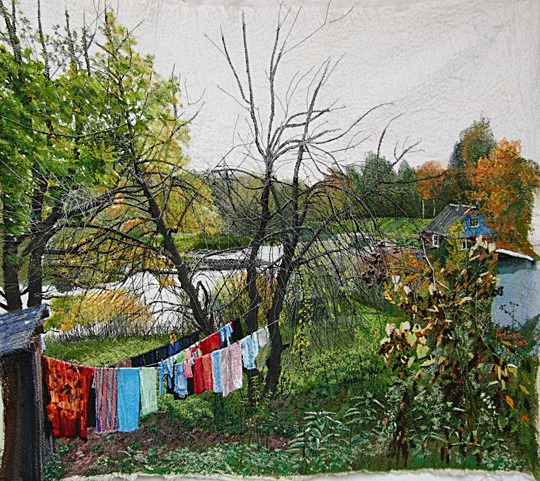
Stepping into the world
TextileArtist.org: What initially captured your imagination about textile art?
Adinka Tellegen: When I was in grammar school I saw a textile work by a friend of a friend, which struck me tremendously. I had never seen anything as beautiful – the colours, the composition.
At the time I used to draw a lot, and I made jewelry that I sold in a fancy shop in the Hague. But since I couldn’t sew, textile was not (yet) on my path.
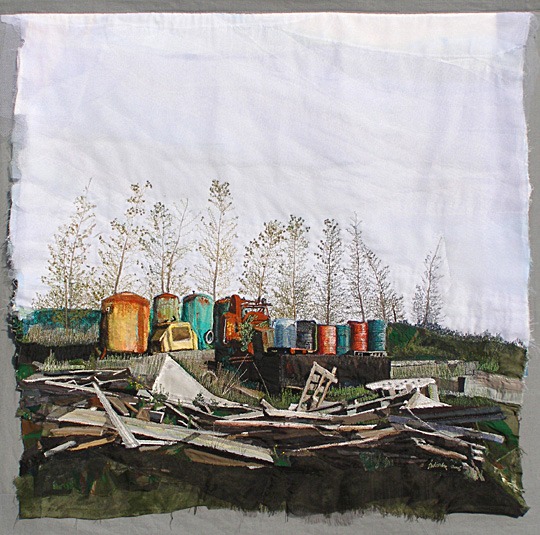
What or who were your early influences and how has your life/upbringing influenced your work?
I went to art school, the Gerrit Rietveldacademie in Amsterdam, to do jewelry. The first year made a huge impression, I moved to Amsterdam and started to live by myself. It was 1966 and the world around me was changing for good. What I learned that first year would last a life time: I learned to look.
I began to sew clothes, and made my first ‘painted’ canvas on the sewing machine. Yet I clung to my intention to do jewelry, although I felt a strong attachment to textile. But at the time there was an attitude that textile was for less talented girls…
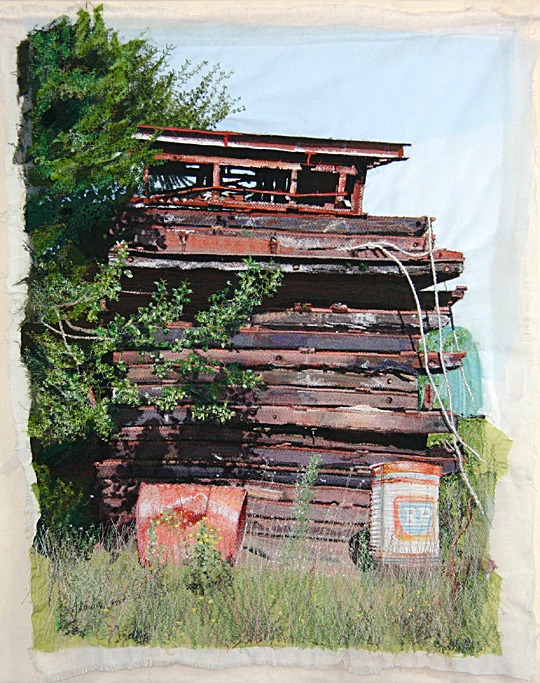
What was your route to becoming an artist?
I went to the section of jewelry, changed to graphics, went back to jewelry, and left art school three years later. I just did not find my way, made a U-turn and went to university to study Russian. For a long time Russian became my main occupation, ‘art’ for spare time and occasions. It was not until the 90s that I finally gave in to my urge to make textile work.
In the solitude of my studio I started to develop a technique to ‘paint’ on the sewing machine. As I didn’t know, nor had I ever heard of anybody else doing similar work, I thought I was the only one in the world (and so did everyone around me). Until a friend drew my attention to the PFAFF Art Embroidery Challenge. She cried on the telephone: ‘they are looking for exactly the same work!’ I was just in time to send in two canvases for the contest of 2009, and that was how I stepped into the world and showed my work for the very first time, in London.

Determined by colour
What is your chosen medium and what are your techniques?
Colour has been my main inspiration, and my choice for fiber has everything to do with that. I think that – apart from glass – no material is so full of colour as textile. And it shocked me to see that the work of graduating textile art students lacked any colour!
The choice of the picture I take for my subject, is also determined by colour. It might be in a detail, but a beautiful picture without colour will not be chosen.
I want to paint on the sewing machine. I aim to make it look like a painting, although no pen, paint or pencil is being used, only fabrics and thread. I am satisfied when people have to put their nose to the canvas, in order to believe it has indeed been sewn, and not painted.
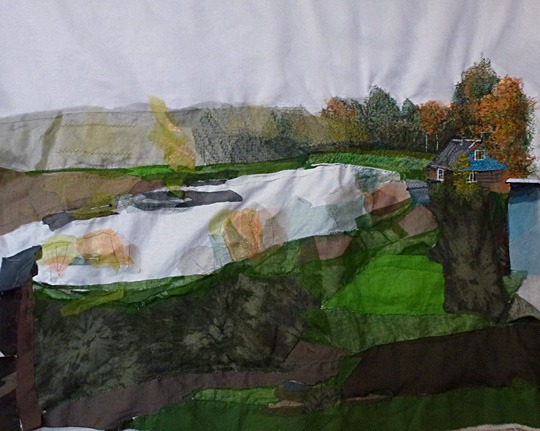

It starts with a picture, which has to be taken by myself. On a cotton ground layer I sew pieces of cut material in roughly about the right shape and colour of the image I want to represent (see Pushkinskye Gory, Work in progress). Then I start to ‘paint’ on the sewing machine in mainly zigzag stitch, using transparent tissues (tulle) for shade and nuance. I have to take the work constantly out of the machine, in order to look at it from a distance. A great disadvantage of the technique is that the cloth inevitably contracts, which harms the composition and the perspective, which has to be adapted all the time. I don’t like bumps and lumps either. If necessary, I even cut the work in order to get rid of them. Sometimes it seems as if I’m bending a stubborn child to my will. You could say ‘So what? This is fiber’. But my main target is to not fall into a textile trap and accept an arbitrary representation.
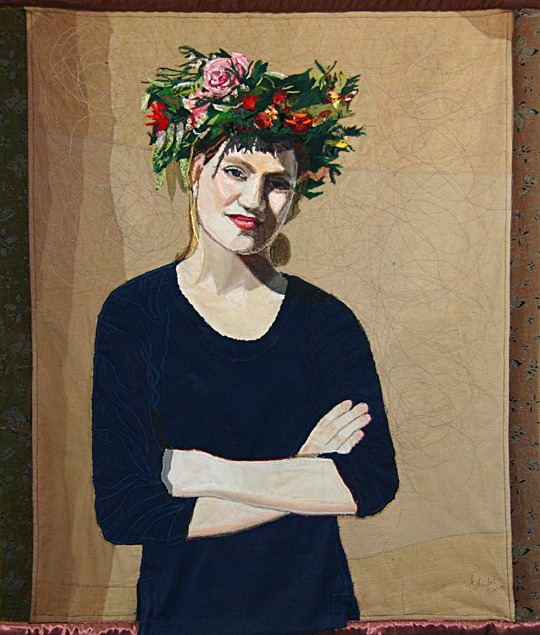
In my subject I choose friction – I strive for maximum contrast between subject (raw) and material (soft). Maybe that’s why there is a lot of decay in my work: the huge yard of a demolisher in the Somme (France) has been a source of inspiration. He has gathered for some 40 years the results of his demolishing labor, several hectares of machines, concrete, wood, iron, and a lot of rust. Do you know how beautiful rust is in textile?
Another way to disassociate the work from textile at first glance – apart from the constant adjustment in favour of maximum resemblance – is NOT to use free motion embroidery, but use the straight line of regular stitch, in order to make it look exact.
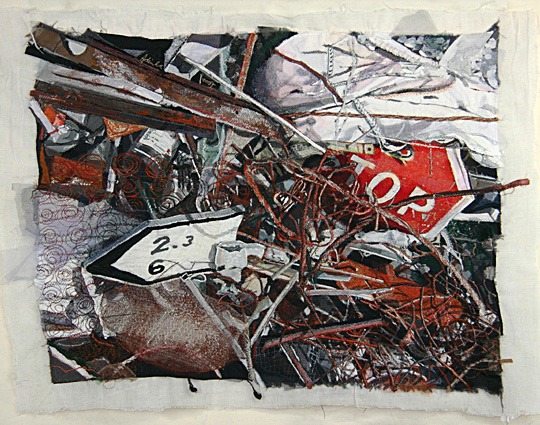
Why do you choose this complicated technique?
I asked myself the question many times, and in fact I have painted. But I can’t express myself in paint like I can on the sewing machine. For instance, I can’t paint trees. The first time I tried to sew a tree, I was afraid. But to my surprise, on this complicated, indirect way the zigzag stitch gave me exactly the tree I had imagined.
It is satisfying to master a skill, which is difficult, not obvious, and demands a lot of patience. In judging other peoples work I also attach much value to craftsmanship.
My recent work is based on pictures I took in Russia: an old dilapidated dacha, an inner court in St. Petersburg, the country side at Pushkinskye Gory, a village at 600 km from St. Petersburg, where the greatest of all Russian poets, Alexander Pushkin, is buried.
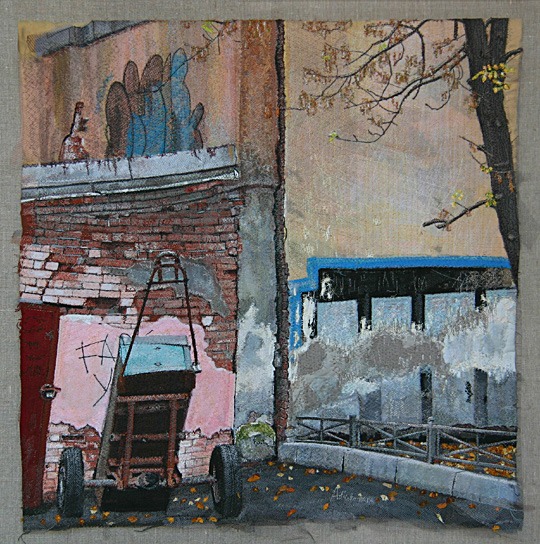
An inspiring experience
How would you describe your work and where do you think it fits within the sphere of contemporary art?
To be honest, I don’t know where it fits in. I have considered joining a society of art-quilters, but I didn’t identify my work with that of the other members. I think I am a painter!
Tell us a bit about your process and what environment you like to work in?
My studio is in my home in Amsterdam. Because the technique is very time-consuming I produce no more than two canvases a year. I’d like to work every day, but unfortunately this isn’t always possible. To compensate I work every evening I spend at home and the weekend. Since it is a lonely occupation, I like to listen to the radio and choose informative, often cultural programs.

What currently inspires you and which other artists do you admire and why?
In 2009 I saw an exhibition of Michael Raedecker in The Hague. He had the guts to stitch right through his painting! The mix of paint and embroidery was fascinating, it was an inspiring experience. And it felt like a relief, because it confirmed what I had felt – that textile was coming out of the no-go-area, no longer being a butt for contempt. It had showed up in a major museum in the work of a recognised painter!
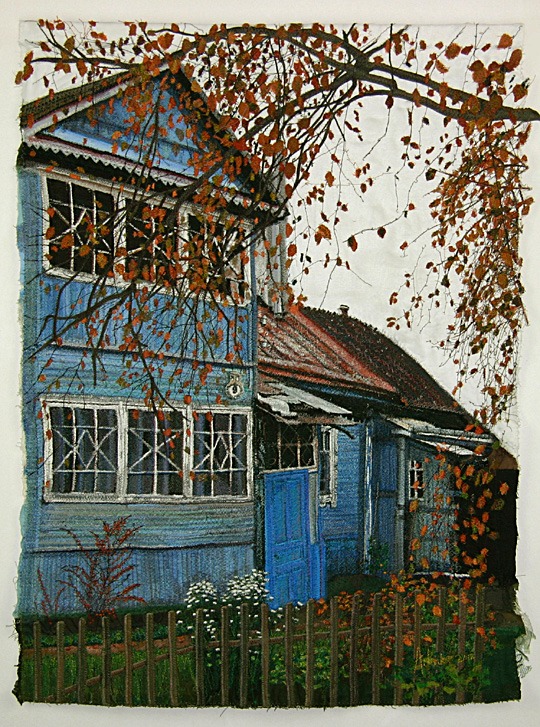
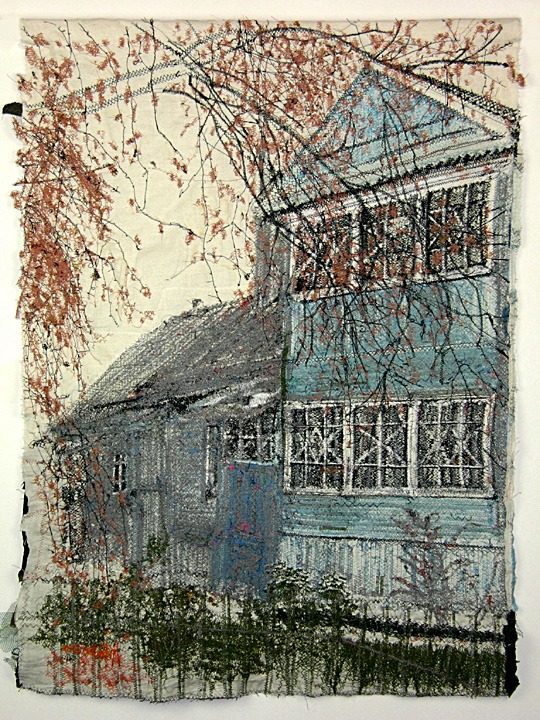
Absorb the colours
Tell us about a piece of work you have fond memories of and why?
Many years ago I went to visit the owners of a carpet designed by Barbara Broekman (a well-known Dutch textile artist). I remember I sat down on the middle of it and didn’t want to get up – I just wanted to look and absorb the colours. The carpet left me literally speechless.
How has your work developed since you began and how do you see it evolving in the future?
My first work consisted more of cut material and less of thread. Later I started using the machine more and more to ‘draw’ and the work has become much thicker.
What advice would you give to an aspiring textile artist?
Don’t be like me, feeling sensitive – as I was at the time – to a concept that ‘textile was for less talented girls’. And in general: don’t be satisfied too soon.
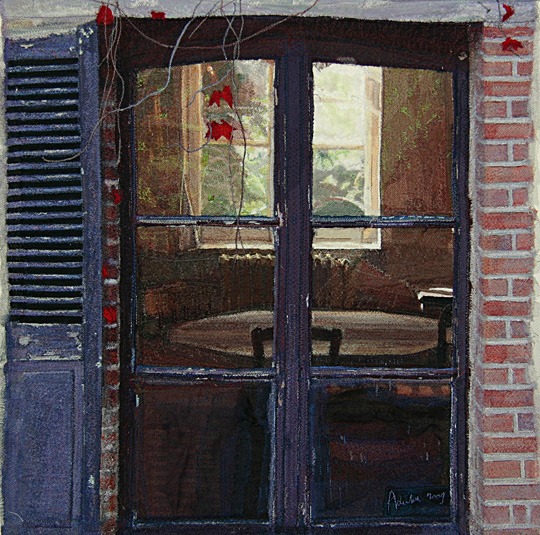
Resources
Can you recommend 3 or 4 books for textile artists?
Textiel Leeft! is a very full and complete book on Dutch textile art.
What other resources do you use? Blogs, websites, magazines etc.
I have subscribed to Textiel PLUS, a Dutch magazine for textile art.
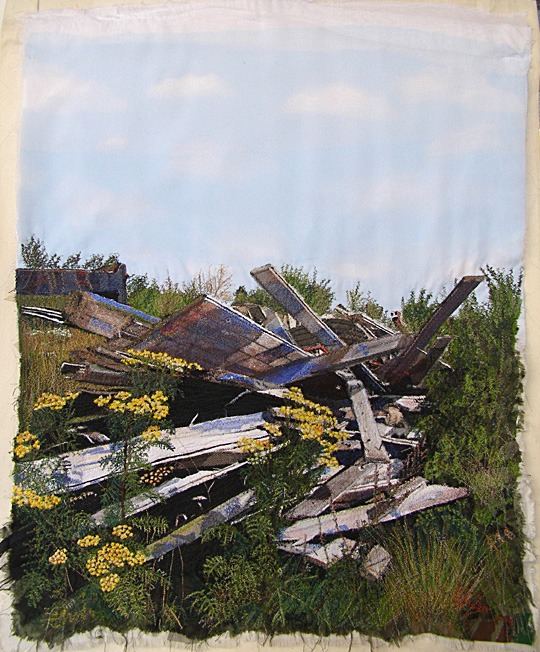
What piece of equipment or tool could you not live without?

How do you go about choosing where to show your work?
I’m just so happy that people (like you) found me on internet via my website.
Where can readers see your work this year?
I have an exhibition in Renesse on an isle in Zeeland, during the Zeeuwse Schouw, an art event for gallery ZeeUwArt from june 14-23 July.

For more information on Adinka’s work please visit her website: adinkatellegen.nl
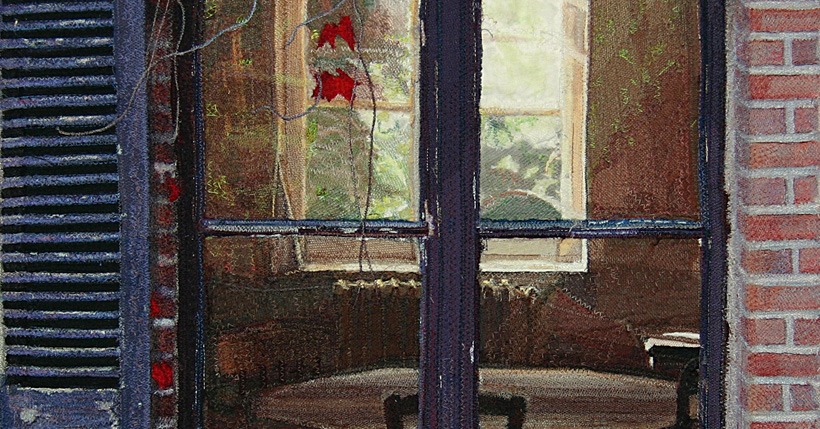

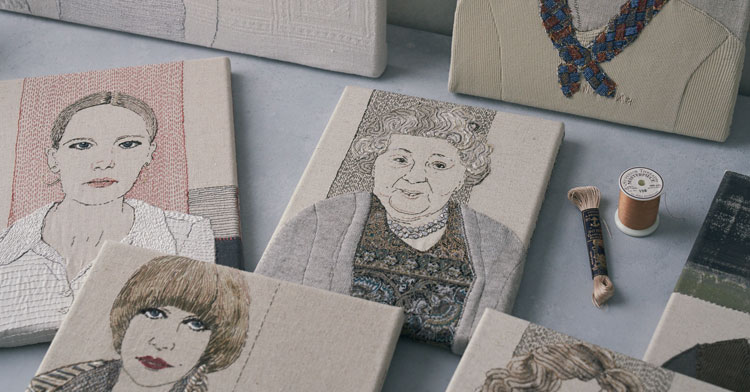
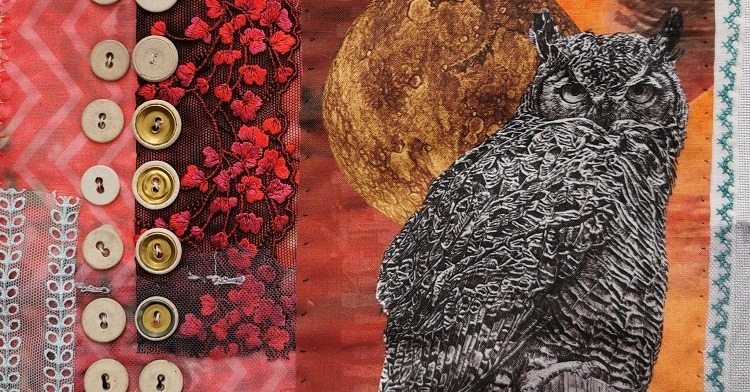
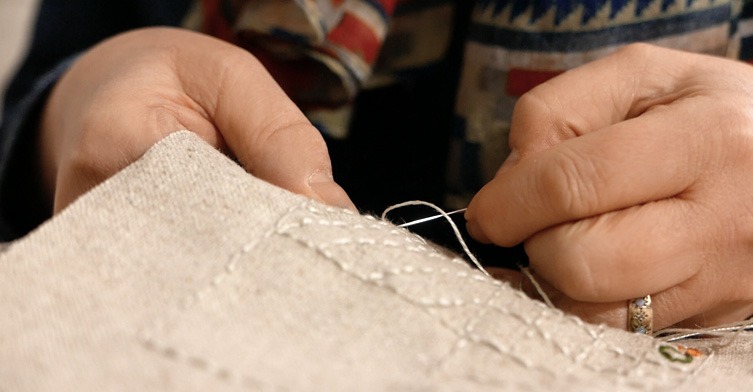
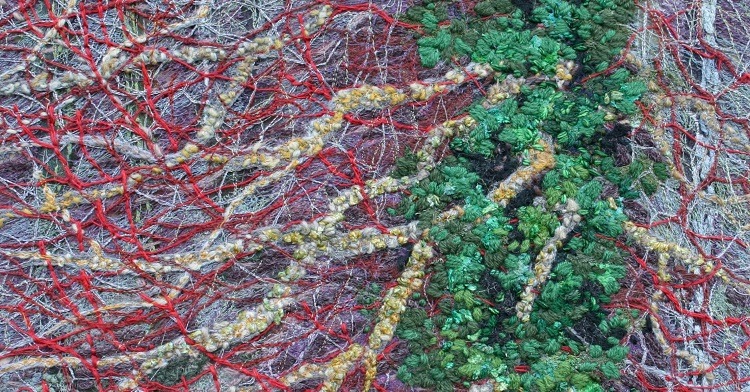
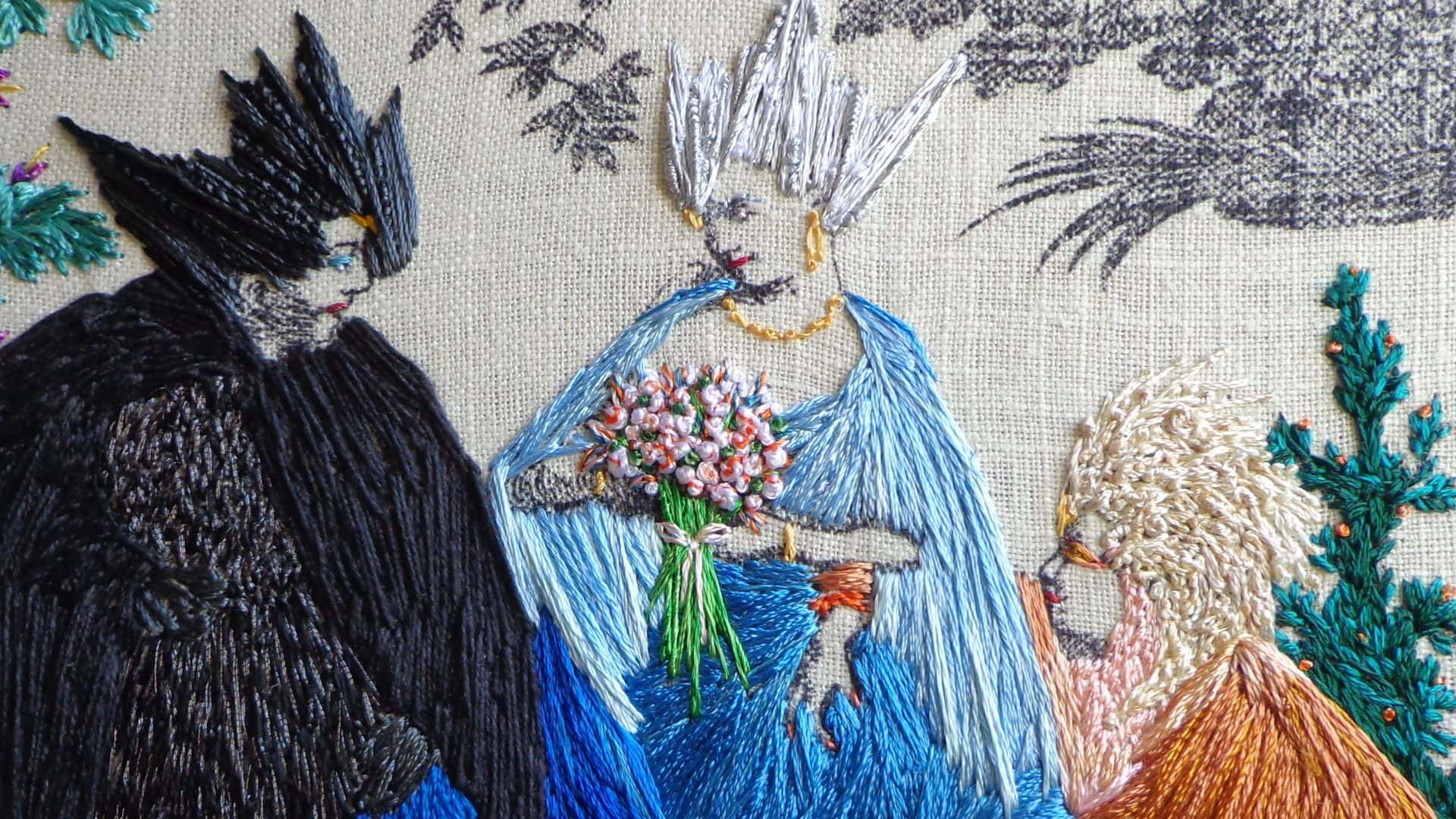
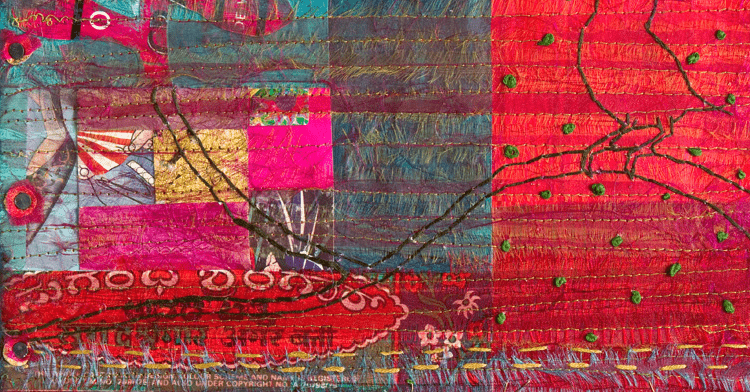
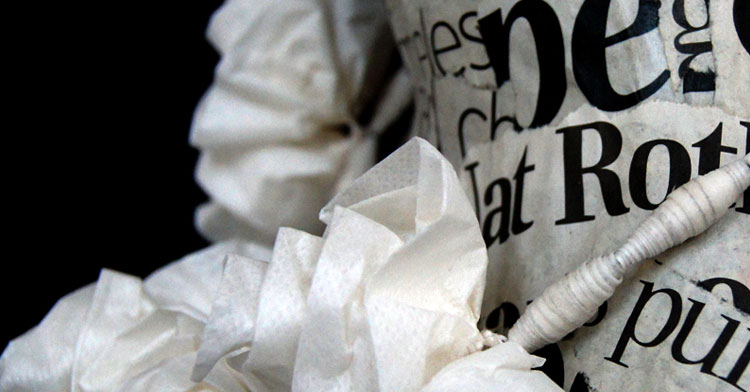
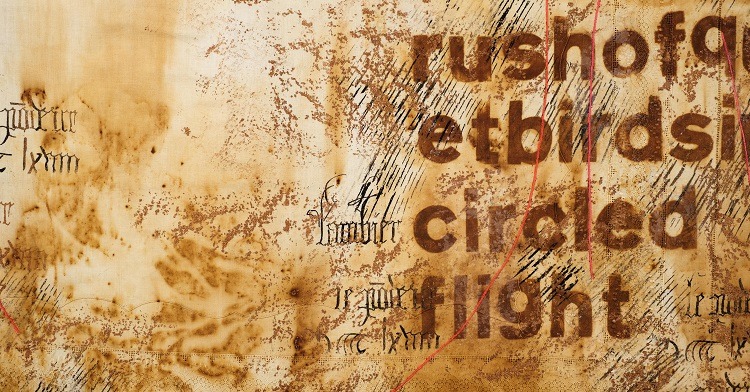
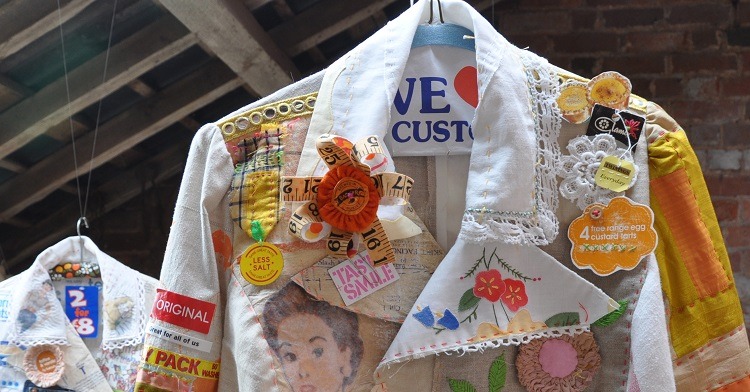
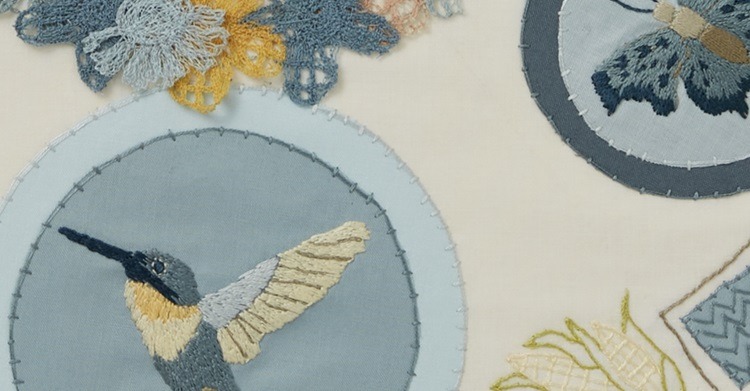
Comments